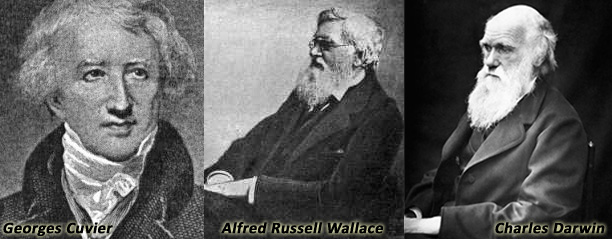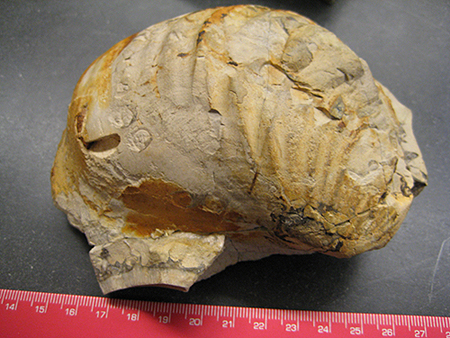Observation and Explanation
Today, what did Darwin really do? The University of Houston presents this program about the machines that make our civilization run, and the people that created them.
Charles Darwin is without a doubt a hugely important contributor to our understanding of the natural world but he's often given credit for something he did not play a large role in. I am, of course, referring to the observation of biologic evolution. Darwin is often associated with something called the Theory of Evolution but the fact that life has gone through many changes during the history of our planet is not a theoretical advance but an observation made by scientists in the field.

Long before Darwin, scientists had made the case that the Earth experienced many changes. One of the most profound was the varieties of fossils preserved in the rocks. In the early 19th century, British and French naturalists found that the fossil record clearly shows an irregular evolution of life. Most dramatically, the irreversible extinction of many life forms. In 1811 Georges Cuvier wrote,
These fossils are generally the same in corresponding beds and present tolerably marked differences of species from one group of beds to another. It is a method of recognition that has to the present has never deceived us.
Specimen of the bivalve Inoceramus, which lived in eastern Colorado during the Cretaceous period (144 to 65 million years ago).
Darwin's predecessors were describing the world. These descriptions were important contributions of their day but it was Darwin and his contemporary, Alfred Russell Wallace who offered a different kind of contribution: an explanation. After all, Darwin's 1859 classic is titled On the Origin of Species, not On the Presence of Species. That life has changed, that it evolved, is an observation that can be repeated today but what Darwin and Wallace did was offer a reason why things change. That was Natural Selection.
Natural Selection occurs because variations exist in all groups of organisms, because organisms generally produce more offspring than can possibly survive, and because competition for food and living space results in the elimination of those individuals less well-adapted to their environment.
So, major evolutionary changes ought to be linked with major environmental changes and much geologic work has borne this out. The explanation of Natural Selection preceded our understanding of genetics and molecular biology. Now those sciences explain the origin of much of the variation in populations of organisms that Wallace and Darwin understood to be so important. Thus, Darwin's Natural Selection and its modifications links the very small (genetics) with the very large (global environmental changes). Together they explain the evolution of life on Earth over billions of years.
Darwin is better remembered than Cuvier or others because he worried about WHY not just WHAT. That we still like the idea of Natural Selection after 150 years of testing it only adds to our appreciation of Darwin. Darwin clearly understood the importance of the work that preceded him but we see that he never forgot about the WHY when he wrote in an 1861 letter,
How odd it is that anyone should not see that all observation must be for or against some view if it is to be of any service!
Many observations do not add a brick to the wall of knowledge but rather just lie around the brickyard because they don't serve an idea. The keenest of our investigators build the wall by knowing what to do with an observation.
I'm Peter Copeland at the University of Houston, where we're interested in the way inventive minds work.
(Theme music)
For more about this idea (including the original quote about “lying around the brickyard”, see Platt (1964).
Ausich, W.I., and Lane, N.G., 1999, Life of the past, 4th ed., Prentice Hall, 321 p.
Darwin, D., 1859, On the Origin of Species by Means of Natural Selection, or the Preservation of Favoured Races in the Struggle for Life. (John Murray, London),
Darwin, F., 1887, The Life and Letters of Charles Darwin, vol. II (John Murray, London), p. 121.
Fortey, R., 2002, Fossils: The key to the past, Smithsonian Institute Press, 232 p.
Platt, J.R., 1964, Strong inference, Science, v. 146 p. 347-353.
Gould, S.J., 2002, The structure of evolutionary theory, Belknap Publishing, 1433 p.
Fossil photo by P. Copeland and portraits are courtesy of Wikipedia Commons.
